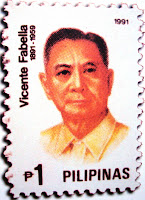The National Anthem of Bangladesh
 Amar Shonar Bangla (My Golden Bengal) is a 1906 song written and composed by the poet Rabindranath Tagore, the first ten lines of which were adopted in 1972 as the Bangladesh national anthem.
Amar Shonar Bangla (My Golden Bengal) is a 1906 song written and composed by the poet Rabindranath Tagore, the first ten lines of which were adopted in 1972 as the Bangladesh national anthem.The word shonar literally means 'made of gold', but in the song shonar Bangla may be interpreted to either express the preciousness of Bengal or a reference to the colour of paddy fields before harvest. The song was written in 1906 during the period of Bangabhanga (Bôngobhôngo - 1905 Partition of Bengal) - when Bengal was divided in two halves by the British government based on religion. This song, along with a host of others, was written to rekindle the unified spirit of Bengal.
It is said that the music of this song was inspired by the Baul singer Gagan Harkara's song "Kothay Pabo Tare".
The first 10 lines of this song constitute the national anthem of Bangladesh. It was adopted in 1972 after the independence of Bangladesh. The English translation was done by Syed Ali Ahsan. Another poem of Tagore's (Jana Gana Mana) was adopted as the national anthem of India.
Rabindranath Tagore (7 May 1861 – 7 August 1941), also known by the sobriquet Gurudev, was a Bengali polymath. He was a poet, visual artist, playwright, novelist, educator, social reformer, nationalist, business-manager and composer whose works reshaped Bengali literature and music in the late 19th and early 20th centuries. He became Asia's first Nobel laureate when he won the 1913 Nobel Prize in Literature.
A Pirali Brahmin from Calcutta, Bengal, Tagore first wrote poems at the age of eight. At the age of sixteen, he published his first substantial poetry under the pseudonym Bhanushingho ("Sun Lion") and wrote his first short stories and dramas in 1877. In later life Tagore protested strongly against the British Raj and gave his support to the Indian Independence Movement. Tagore's life work endures, in the form of his poetry and the institution he founded, Visva-Bharati University.
Tagore wrote novels, short stories, songs, dance-dramas, and essays on political and personal topics. Gitanjali (Song Offerings), Gora (Fair-Faced), and Ghare-Baire (The Home and the World) are among his best-known works. His verse, short stories, and novels, which often exhibited rhythmic lyricism, colloquial language, meditative naturalism, and philosophical contemplation, received worldwide acclaim. Tagore was also a cultural reformer and polymath who modernised Bengali art by rejecting strictures binding it to classical Indian forms. Two songs from his canon are now the national anthems of Bangladesh and India: the Amar Shonar Bangla and the Jana Gana Mana respectively.






